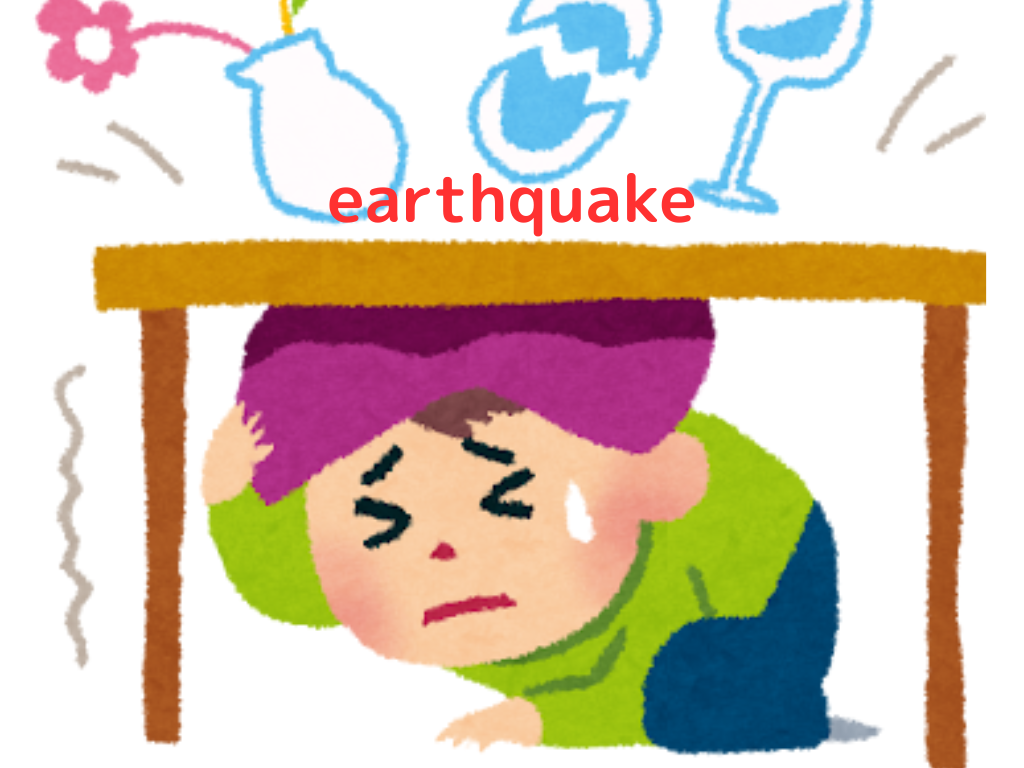Sep22024
Are you afraid of earthquakes in Japan? With the right knowledge, you have less to worry about.

Nankai Trench earthquakes are earthquakes caused by the impact of the land plate (Eurasian plate) on the oceanic plate (Philippine Sea plate) under the Pacific side of Japan.
According to the government, a major earthquake in the Kyushu region has increased the likelihood of such an earthquake. This is because the plates under the sea are connected to each other.
Nankai Trench earthquakes generally occur at intervals of 100 to 150 years, and as more than 70 years have passed since the last Nankai Trench earthquakes (1944 and 1946), the next earthquake is becoming increasingly likely.
All Japanese people know about earthquakes, and earthquake drills are held regularly in schools. Everyone is trained not to panic in the event of an earthquake.
When an earthquake occurs, the first thing to do is to protect yourself. That is the most important principle.
There is a unique Japanese indicator for the degree of intensity of earthquake tremors, which we call SHINDO (seismic intensity). The Japanese judge earthquakes by this SHINDO value.they are numbered according to the magnitude of the earthquake. Explanations can be found below.
SHINDO 1 : Some people who are indoors will feel the vibrations slightly.
SHINDO 2 : Most people who are indoors will feel the vibrations. Some of the sleeping people will wake up.
SHINDO 3 : Most people indoors will feel the tremors.
Some people who are on foot will feel the tremors. Most people who are sleeping will wake up.
SHINDO 4: Most people will be frightened. Most people who are walking will feel the shaking. Most people who are asleep will wake up.
SHINDO 5-Weak : Most people are afraid and want to hold on to things.
SHINDO 5-Strong : Most people find it difficult to walk without holding on to things and have other difficulties with activities.
SHINDO 6 -Weak : Difficulty standing.
SHINDO 6-Strong and SHINDO 7: They cannot stand or move around unless they are crawling on the floor. Sometimes they are unable to move and are lifted into the air by the shocks.
The Japanese will behave as usual until SHINDO3.
At SHINDO 4, the Japanese are worried about the earthquake.
SHINDO 5 and higher cause problems, e.g. trains stop. Near the coast, people flee to higher ground because of the tsunami danger.
If you are in a hotel, the hotel staff will advise you; if you are on a train, the train staff will direct people. If you are in the city, a Japanese person nearby will probably speak to you. But they will only speak Japanese. Many Japanese people do not speak English. It would be good to learn some basic Japanese vocabulary in case of emergency. I doubt anyone would resort to a translation app in a hurry.
In the event of a severe earthquake, electricity, gas and water supplies are interrupted. Cell phones are also no longer functional. If the power goes out, ATMs and credit cards cannot be used. You should always carry some cash in Japanese yen with you. You should also have a drink and something to eat such as chocolate or cookies in your bag. If you have no other options, you will have something to drink or eat.
For about 2000 years, the Japanese have lived in Japan with earthquakes and typhoons.
I want you to enjoy Japan, but I also want you to have some reverence for nature.
My small travel agency can also offer simple Japanese courses before the trip via ZOOM or Skype.
In addition, the concierge service provides advice in emergencies.











